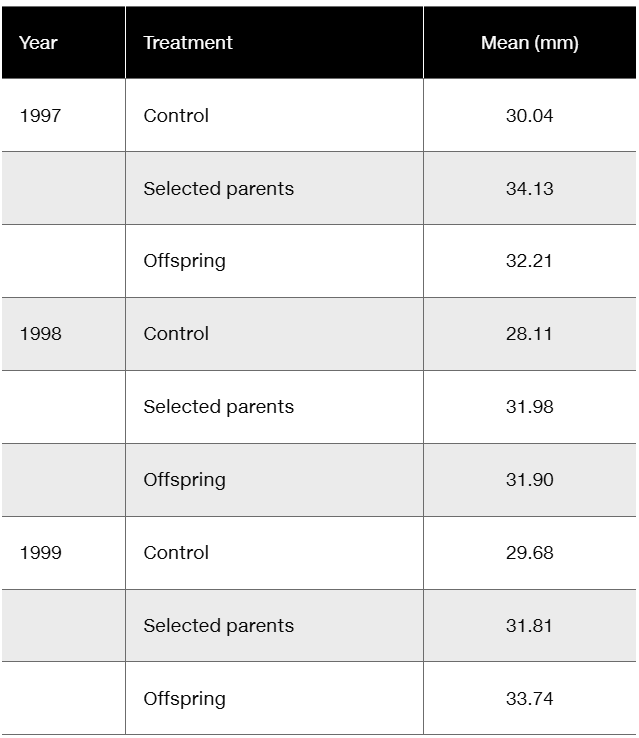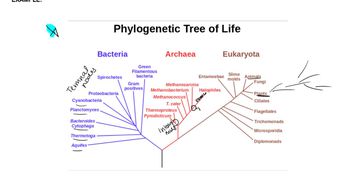Answer the following in regard to multifactorial traits in human twins. If the trait is produced with little contribution from genetic variation, what would you expect to see if you compared the concordance rates of MZ twins versus DZ twins? Explain your reasoning.
Table of contents
- 1. Introduction to Genetics51m
- 2. Mendel's Laws of Inheritance3h 37m
- 3. Extensions to Mendelian Inheritance2h 41m
- 4. Genetic Mapping and Linkage2h 28m
- 5. Genetics of Bacteria and Viruses1h 21m
- 6. Chromosomal Variation1h 48m
- 7. DNA and Chromosome Structure56m
- 8. DNA Replication1h 10m
- 9. Mitosis and Meiosis1h 34m
- 10. Transcription1h 0m
- 11. Translation58m
- 12. Gene Regulation in Prokaryotes1h 19m
- 13. Gene Regulation in Eukaryotes44m
- 14. Genetic Control of Development44m
- 15. Genomes and Genomics1h 50m
- 16. Transposable Elements47m
- 17. Mutation, Repair, and Recombination1h 6m
- 18. Molecular Genetic Tools19m
- 19. Cancer Genetics29m
- 20. Quantitative Genetics1h 26m
- 21. Population Genetics50m
- 22. Evolutionary Genetics29m
20. Quantitative Genetics
Heritability
Problem 28d
Textbook Question
Floral traits in plants often play key roles in diversification, in that slight modifications of those traits, if genetically determined, may quickly lead to reproductive restrictions and evolution. Insight into genetic involvement in flower formation is often acquired through selection experiments that expose realized heritability. Lendvai and Levin (2003) conducted a series of artificial selection experiments on flower size (diameter) in Phlox drummondii. Data from their selection experiments are presented in the following table in modified form and content.

In terms of evolutionary potential, is a population with high heritability likely to be favored compared to one with a low realized heritability?
 Verified step by step guidance
Verified step by step guidance1
Understand the concept of heritability: Heritability is a measure of how much of the variation in a trait (such as flower size) is due to genetic factors versus environmental factors. High heritability indicates that genetic factors play a significant role in determining the trait.
Relate heritability to evolutionary potential: A population with high heritability for a trait is more likely to respond to selection pressures because genetic variations can be passed on to the next generation. This makes the population more adaptable to changes in the environment.
Consider the implications of low heritability: In populations with low heritability, environmental factors dominate the expression of the trait. This means that even if selection pressures are applied, the trait may not change significantly across generations.
Analyze the context of artificial selection experiments: In the study by Lendvai and Levin (2003), artificial selection experiments on flower size in Phlox drummondii were conducted to measure realized heritability. These experiments help determine how much the trait can evolve under controlled selection pressures.
Conclude the evolutionary advantage: Populations with high heritability are generally favored in terms of evolutionary potential because they can adapt more effectively to selection pressures, leading to diversification and reproductive isolation, which are key drivers of evolution.
 Verified video answer for a similar problem:
Verified video answer for a similar problem:This video solution was recommended by our tutors as helpful for the problem above
Video duration:
51sPlay a video:
Was this helpful?
Key Concepts
Here are the essential concepts you must grasp in order to answer the question correctly.
Heritability
Heritability is a measure of how much of the variation in a trait within a population can be attributed to genetic differences among individuals. It is expressed as a proportion, ranging from 0 to 1, where a higher value indicates that genetics play a larger role in the trait's expression. Understanding heritability is crucial for predicting how traits may evolve over generations, especially in response to selection pressures.
Recommended video:
Guided course

Calculating Heritability
Artificial Selection
Artificial selection is a process in which humans intentionally breed plants or animals for specific traits. This method allows researchers to observe the effects of selective pressures on traits, such as flower size in Phlox drummondii. By manipulating breeding, scientists can gain insights into the genetic basis of traits and their heritability, which is essential for understanding evolutionary dynamics.
Recommended video:
Guided course

Artificial Selection
Evolutionary Potential
Evolutionary potential refers to the capacity of a population to adapt to changing environmental conditions through genetic variation and natural selection. Populations with high heritability for certain traits are more likely to exhibit significant evolutionary changes, as these traits can be rapidly passed on to subsequent generations. This concept is vital for assessing how populations might respond to selective pressures, such as those imposed by environmental changes.
Recommended video:
Guided course

Phylogenetic Trees

 7:04m
7:04mWatch next
Master Calculating Heritability with a bite sized video explanation from Kylia
Start learningRelated Videos
Related Practice
Textbook Question
502
views
